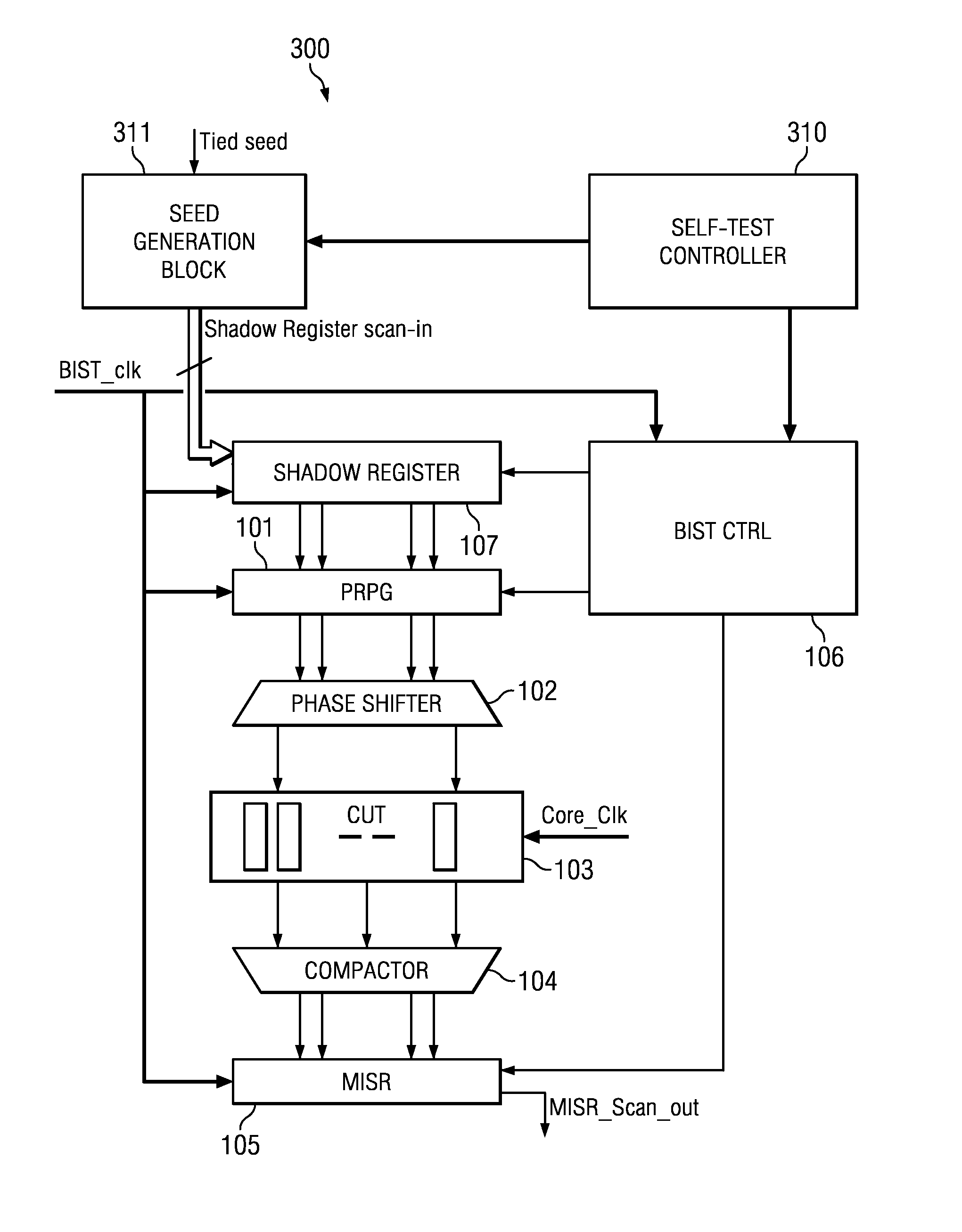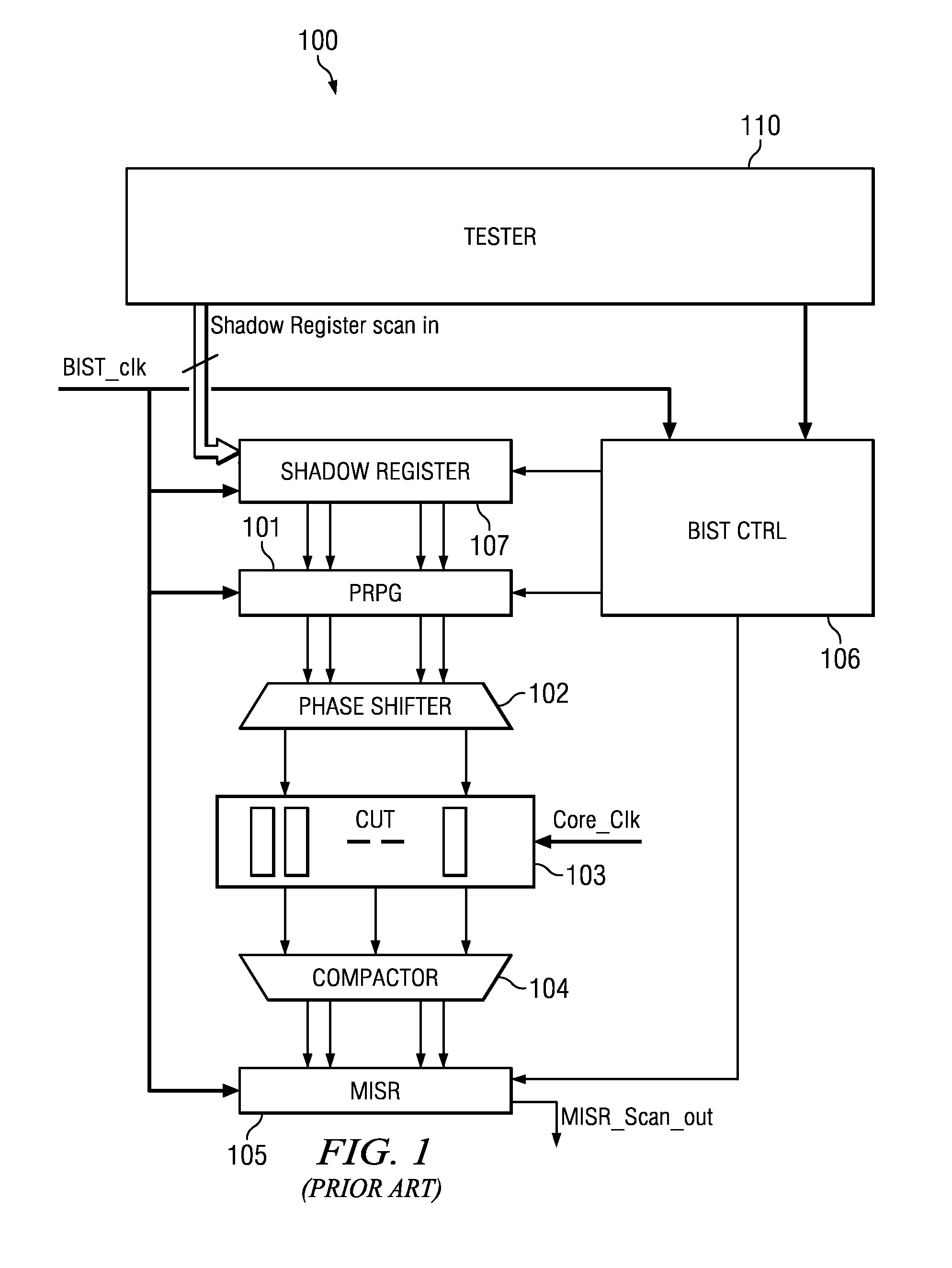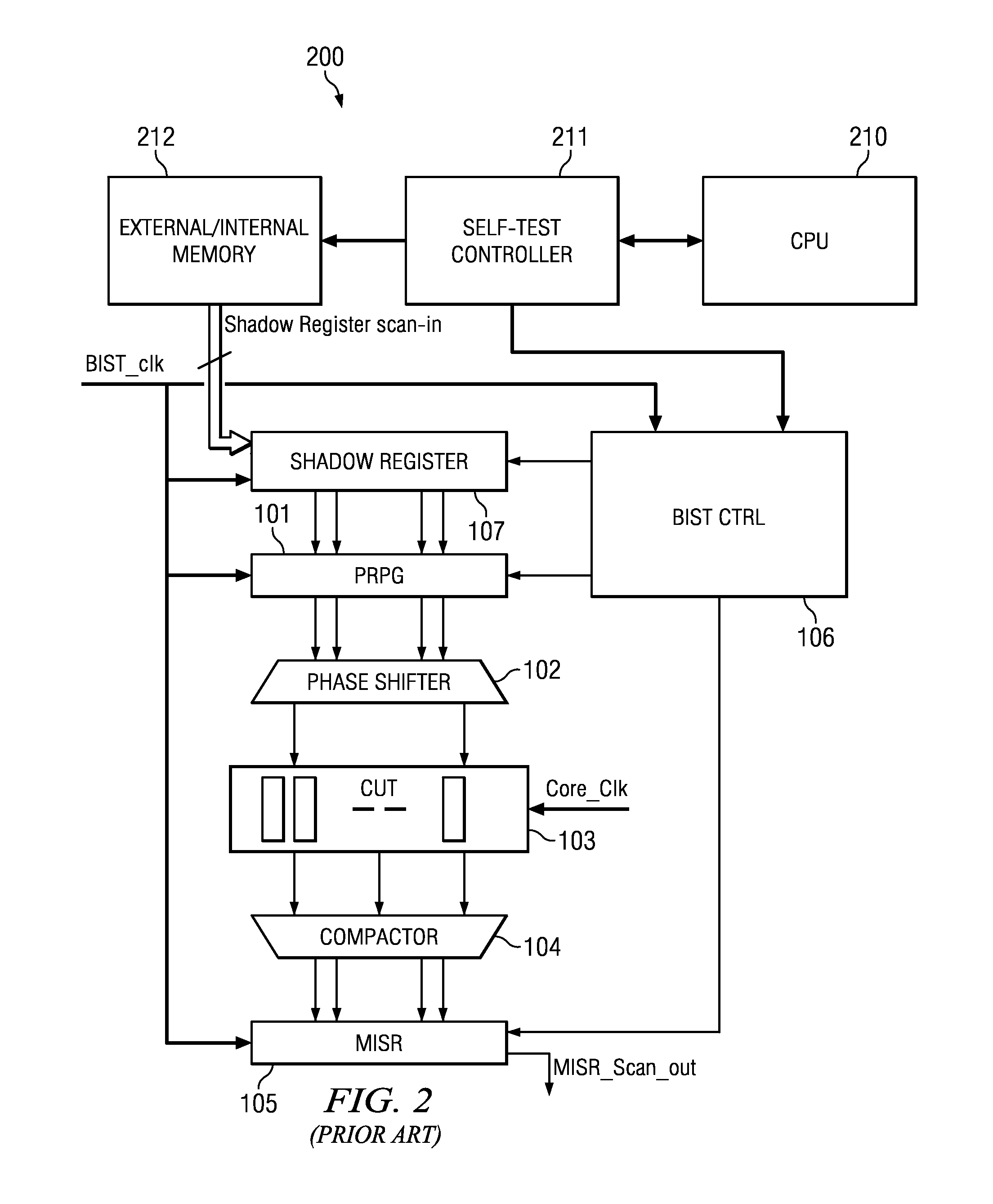On-chip seed generation using boolean functions for LFSR re-seeding based logic BIST techniques for low cost field testability
a logic bist and re-seeding technology, applied in the field of built-in self-test systems, can solve the problems of low test coverage, difficult to test for all defect models at time-zero manufacturing tests, and improper conformance, and achieve simple arithmetic functions, reduce the area required for seed generation, and improve the effect of test coverag
- Summary
- Abstract
- Description
- Claims
- Application Information
AI Technical Summary
Benefits of technology
Problems solved by technology
Method used
Image
Examples
Embodiment Construction
[0022]Field test using logic BIST is commonly employed in safety critical applications. Logic BIST is implemented using LFSRs as pseudo-random pattern generators (PRPG) and a multiple input signature register (MISR) as response compactors. LFSR techniques suffer from low coverage due to pseudo-random patterns. To improve the coverage obtained by traditional LFSR based BIST, re-seeding techniques are used wherein the LFSR is periodically seeded (initialized) to generate a new set of patterns. Re-seeding is effective to obtain high coverage, similar to that obtained using deterministic patterns obtained using ATPG (automatic test pattern generation) techniques. This incurs associated costs of prior seed generation and seed storage on-chip when logic BIST is employed for field test. As a result, field test using traditional logic BIST techniques suffers from either low coverage or has the overhead of requirement of on-chip memory for seed storage. A large number of seeds are often requ...
PUM
 Login to View More
Login to View More Abstract
Description
Claims
Application Information
 Login to View More
Login to View More - R&D
- Intellectual Property
- Life Sciences
- Materials
- Tech Scout
- Unparalleled Data Quality
- Higher Quality Content
- 60% Fewer Hallucinations
Browse by: Latest US Patents, China's latest patents, Technical Efficacy Thesaurus, Application Domain, Technology Topic, Popular Technical Reports.
© 2025 PatSnap. All rights reserved.Legal|Privacy policy|Modern Slavery Act Transparency Statement|Sitemap|About US| Contact US: help@patsnap.com



